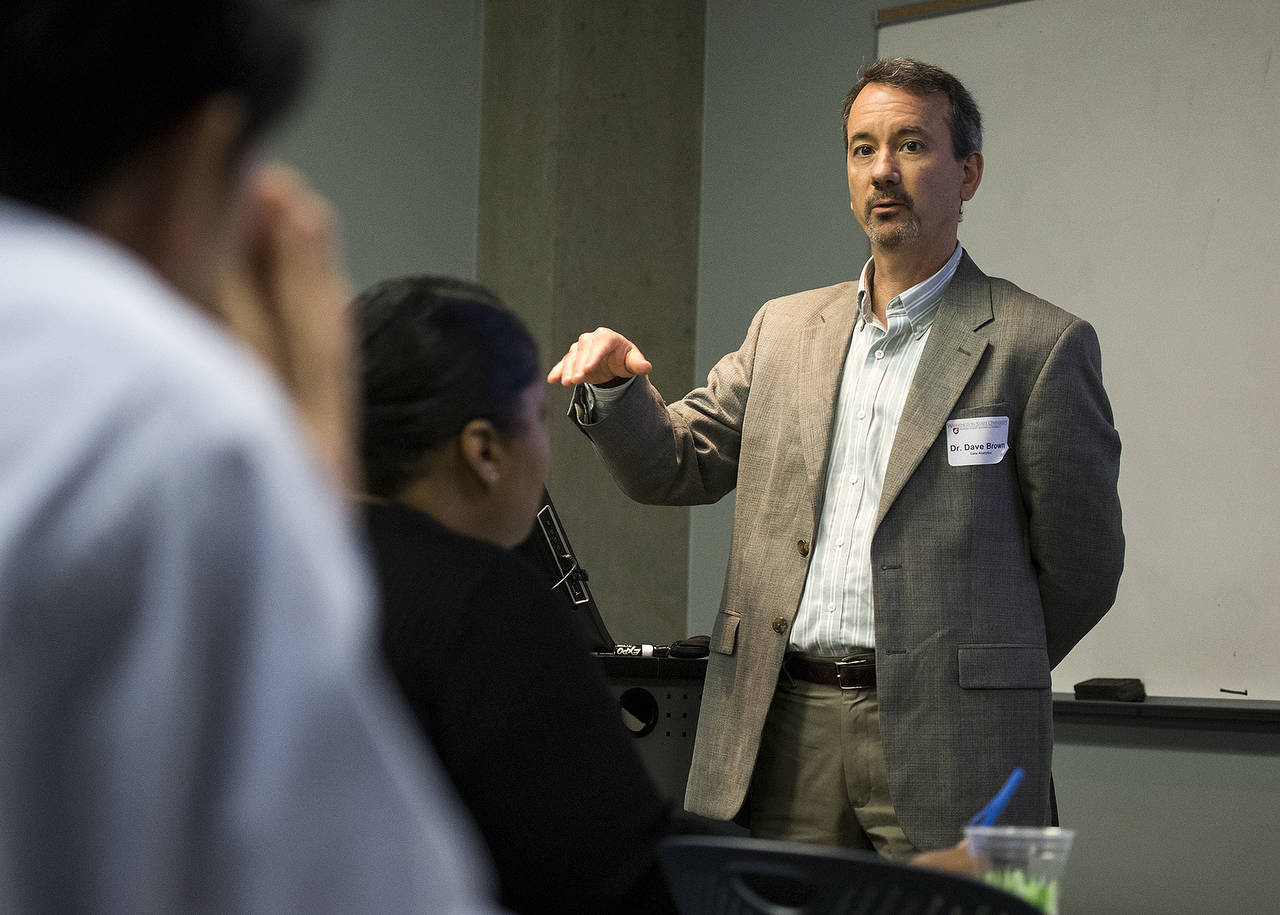EVERETT — In a world of big data, there need to be people who can wrangle large amounts of information and make sense out of it.
That’s what a new data analytics program at the Washington State University Everett’s campus aims to teach students to do.
Businesses and industries are awash in data, but need to be able to sort and sift through the gigabytes of information, said Michelle Carter, an assistant professor for the program.
“For businesses operating in today’s environment, the data they have are assets that they can turn into a competitive advantage if they’re the ones who can develop the algorithms to understand their customers better and tailor their services better,” Carter said.
Industries are looking for people with expertise to translate massive amounts of data and bring it to bear on tangible, real-world problems, said Dave Brown, the director of the data analytics program.
WSU has already spoken with several companies about the program, including Google, Microsoft, Pemco, Nordstrom, T-Mobile and Boeing.
“Boeing is the first company we talked to and they actually have two new job descriptions that just came online this year,” Brown said. “One is more on the data science side and one is more business intelligence side. Boeing is certainly moving in this direction fairly hard.”
The data analytics program is accepting students in Everett now for classes this fall. The programs aims to ramp up to 25 students per year.
This will be the sixth bachelor’s degree that Washington State University North Puget Sound offers in Everett. The other programs are: mechanical engineering; electrical engineering; integrated strategic communications; hospitality business management; and software engineering.
The university, which took over management of the Everett University Center, has about 200 students.
WSU is one of two universities to offer the data analytics program as a bachelor’s degree; the other is Ohio State University. WSU started teaching students at the main campus in Pullman this spring. The univesity also plans to teach courses in Everett, Vancouver and at it’s global campus.
“I think the term was first coined — data science — in about 2008 or 2009,” Brown said. “It’s really been in the last few years that companies have really started the positions for data analysts or data scientists and started struggling to find them.”
Companies receive so much information nowadays, Brown. said Major retail clothing stores get information from brick-and-mortar stores, online business and from apps and social media.
“A lot of business intelligence is actually knowing what’s happening in your own business,” Brown said. “A lot of companies spend a lot of time looking pretty far back in the rear-view mirror. They’d like to have real-time information about how every unit is performing and how every line is performing right now.”
Information is coming from a variety of sources. Aerospace company Pratt & Whitney has a new engine that downloads 10 gigabytes per second of information on the performance of the engine, Brown said. Automobiles are generating more and more information. Factories are using sensors to generate information.
Analyzing data isn’t just sorting through numbers. Text analytics is a growing part of the field. Carter points to the emails found on former Congressman Anthony Weiner’s laptop during last year’s presidential campaign. The FBI analyzed the emails in several days and said they didn’t find anything new in the information.
“The Trump campaign said, ‘That’s not possible — you can’t read through 600,000 emails in this amount of time,’” Carter said. “Well no, you can’t but you can use text analytics to analyze them to see if there’s anything in them that you haven’t seen before.”
One of the issues that will come up in the program is privacy, Carter said. The online world is generating so much information on people that privacy as it once was known has changed, she said. Carter said she didn’t want to paint a dystopian view, but companies can find massive amounts of data about people through their online interactions.
“A student of mine drew a picture of a dam to try and show this is the dam we build to protect that information, but as you build that dam there’s all these little bits that are getting around outside of the dam that you didn’t think to protect,” Carter said. All of this information can be used to improve our lives. Brown points to how elder care and health care is using and understanding data. He said organizations are wiring assisted-living apartments with sensors and giving Fitbit-type wristbands to residents to generate data.
“They can actually monitor their activity,” Brown said. “How much they’re moving, how often they’re going to the bathroom, what their eating habits are, their blood sugar, their body temperature and the Fitbit can monitor pulse and, then, in a very intelligent way, send out warnings to either family or health care providers based on an algorithm that this person may be at risk right now.”
That information is useless unless there are people who can translate what it means and ask the right question to figure out how it can help a company or an industry.
“We’ve been dealing with data for a long time — how do we get the right information to the right people at the right time,” Carter said. “That’s the age-old data management question … the thing is when we get more and more data, the traditional forms of computing, storing and an analyzing data doesn’t cut it anymore.”
Talk to us
> Give us your news tips.
> Send us a letter to the editor.
> More Herald contact information.

























